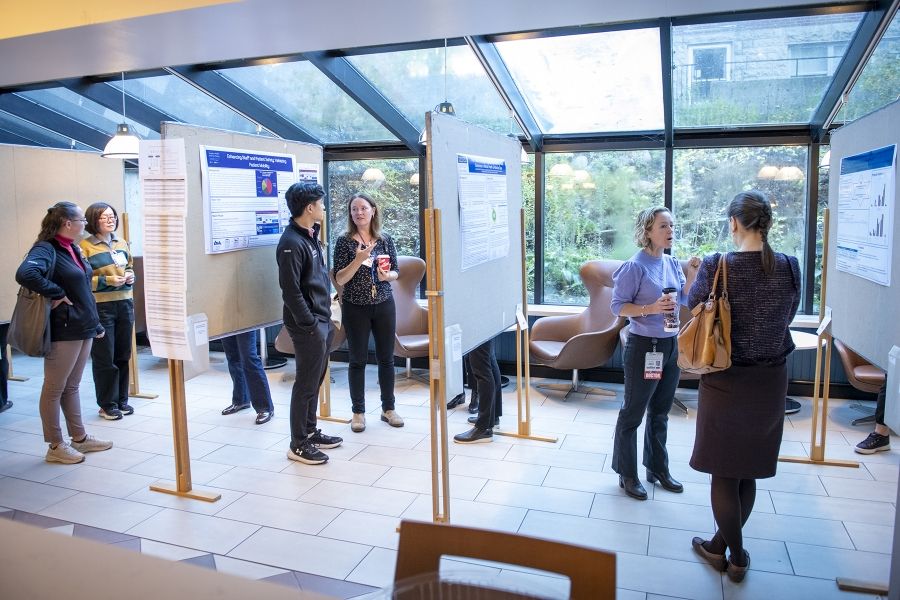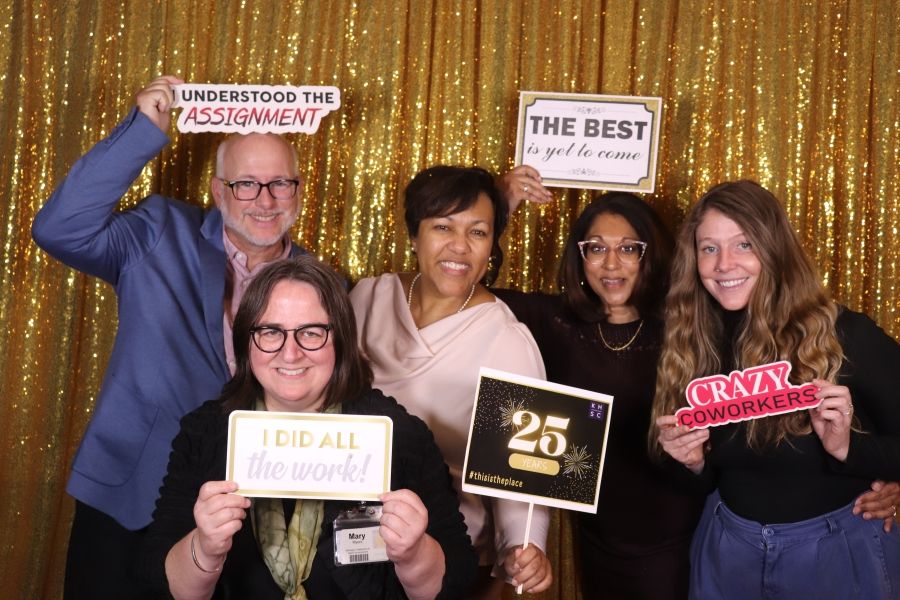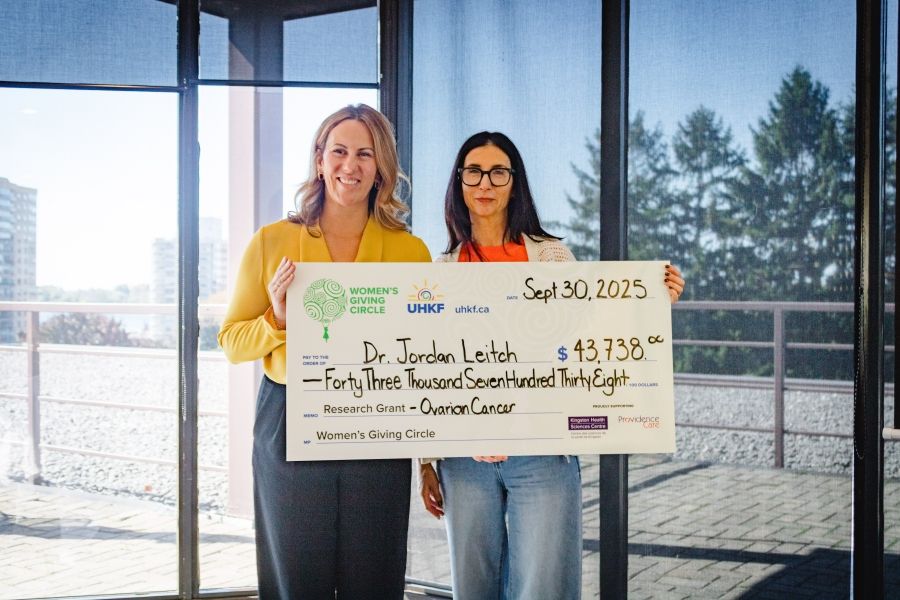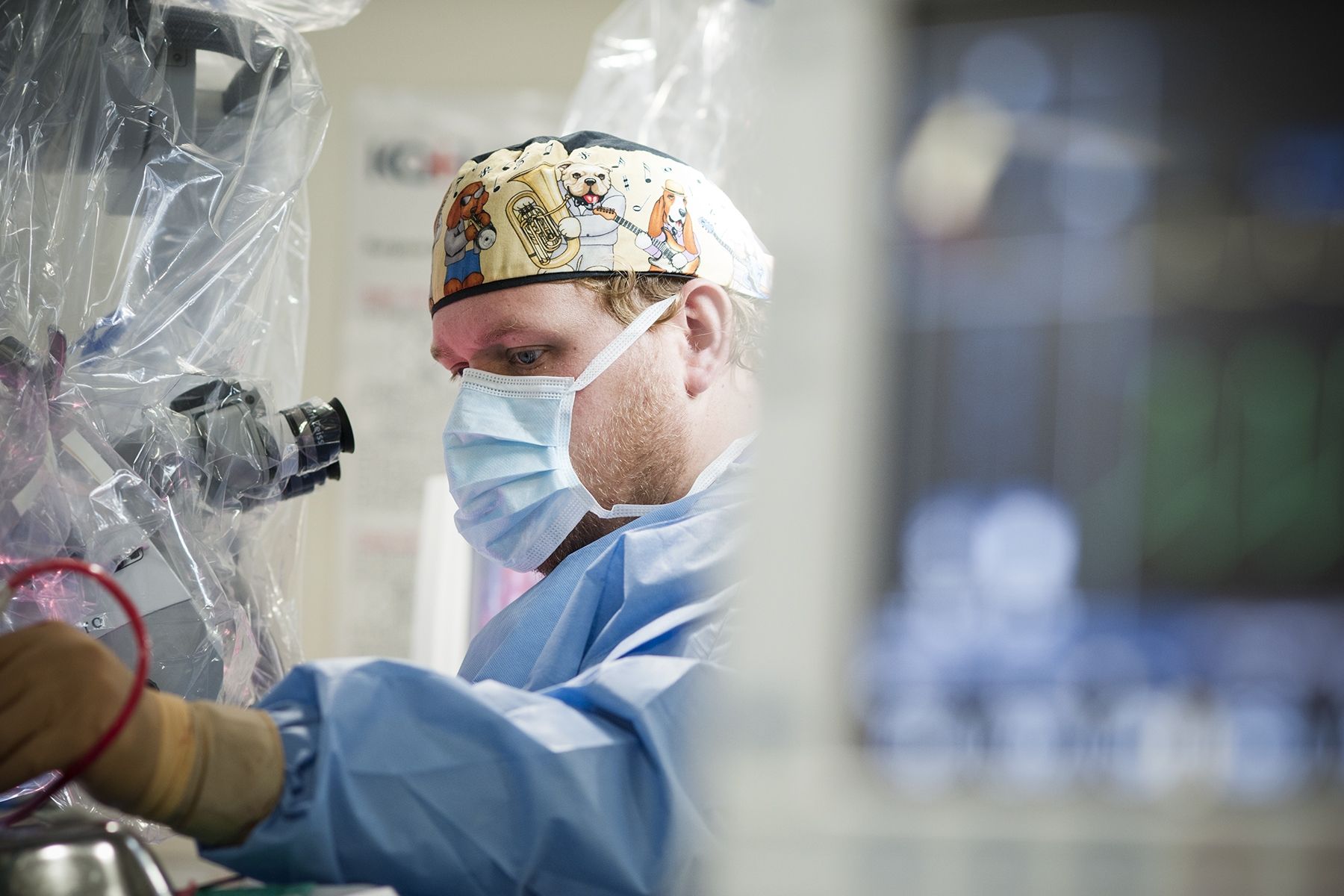
For frail and elderly individuals, brain bleeds caused by falling are a major health risk. For some, there’s also a risk of misdiagnosis, because the symptoms of a brain bleed can be mistaken for age-related conditions such as dementia, neurological disease or medication effects.
Currently, primary care doctors diagnose this traumatic head injury with a CT scan. But not all hospitals have this equipment, so patients must travel to larger health centres, making diagnosis, treatment, and followup difficult, expensive, and time-consuming. For elderly patients with dementia, this process can also be disorienting and frightening.
“Imagine if your family doctor or local clinic had a simple, fast way to identify and monitor this kind of injury,” says D.J. Cook, a neurosurgeon at Kingston Health Sciences Centre (KHSC) and an assistant professor in the Department of Surgery at Queen’s University.
Now Dr. Cook and a team at KHSC, Providence Care, and Queen’s University are working to make that happen. They’ve partnered with ArcheOptix, a Kingston medical device company, to test the capabilities of a hand-held scanner to rapidly detect bleeding in the brain.
“It’s a very simple, non-invasive imaging tool. You pass it over the head, and it can instantly detect brain bleeds within three centimeters of the surface,” says Dr. Cook.
The portable, radiation-free device helps doctors more quickly detect the presence and severity of bleeding, ensuring patients receive care more quickly. For some patients, it could also reduce the need for repeated CT imaging (and radiation exposure), which currently is a routine part of follow-up care, Dr. Cook says.
Approved for use by Health Canada earlier this year, the NIRD™ Hematoma Detector uses near-infrared spectroscopy to locate and image brain bleeds, and is currently being used in trials in the U.S.
“Our region has a disproportionate number of patients who are elderly and frail or living with other chronic conditions, I thought it would be relevant to conduct this research with the device right here in Kingston,” Dr. Cook says.
With funding from the Ontario Centres of Excellence and the Centre for Aging and Brain Health Innovation, Dr. Cook is now leading two studies into brain bleeds in this population.
In the first study, titled Better Care Closer to Home, doctors will use the device to track two groups of elderly patients.
“Some have had surgery and require post-operative follow up, and others with smaller bleeds are simply being observed to see whether bleeding will increase or dissipate. Right now there is no way to do this except by CT scan,” Dr. Cook says.
“Our neurosurgery catchment lies over an enormous geographical area, encompassing 14 emergency rooms, of which only six have 24-hour access to CT, so patients who need more specialized care have to travel to larger centres like Kingston or Belleville,” Dr. Cook says. “We want to see if this non-invasive test can be used by primary care physicians to track patients’ progress after a bleed, ultimately avoiding extra trips for patients.”
The study will target 50 patients and will deploy an imager in each of Kingston Health Sciences Centre and Providence Care, with three units floating among patient care offices in areas with follow-up imaging.
The second study, funded by the Centre for Aging and Brain Health Innovation, and in collaboration with Dallas Seitz, Associate Professor and clinician scientist in Geriatric Psychiatry at Queen’s and Providence Care, will screen 30 patients with early and late-stage dementia, with a previous head injury from falling.
“Over the last five years I’ve seen patients who were thought to have dementia but we later found out through a CT scan or a neurological deficit that they had chronic bleeds, and when we treat the bleed, some of these patients get better,” Dr. Cook says.
His vision is to have family doctors and health care providers in remote areas trained to use the tool, enabling them to do the imaging right in the office, and referring those with positive results for CT scans.
“It leads to more timely care, and gives patients the benefit of follow-up care closer to home,” he says.
The studies are underway and expected to be completed in the spring and summer of 2019.
Gallery

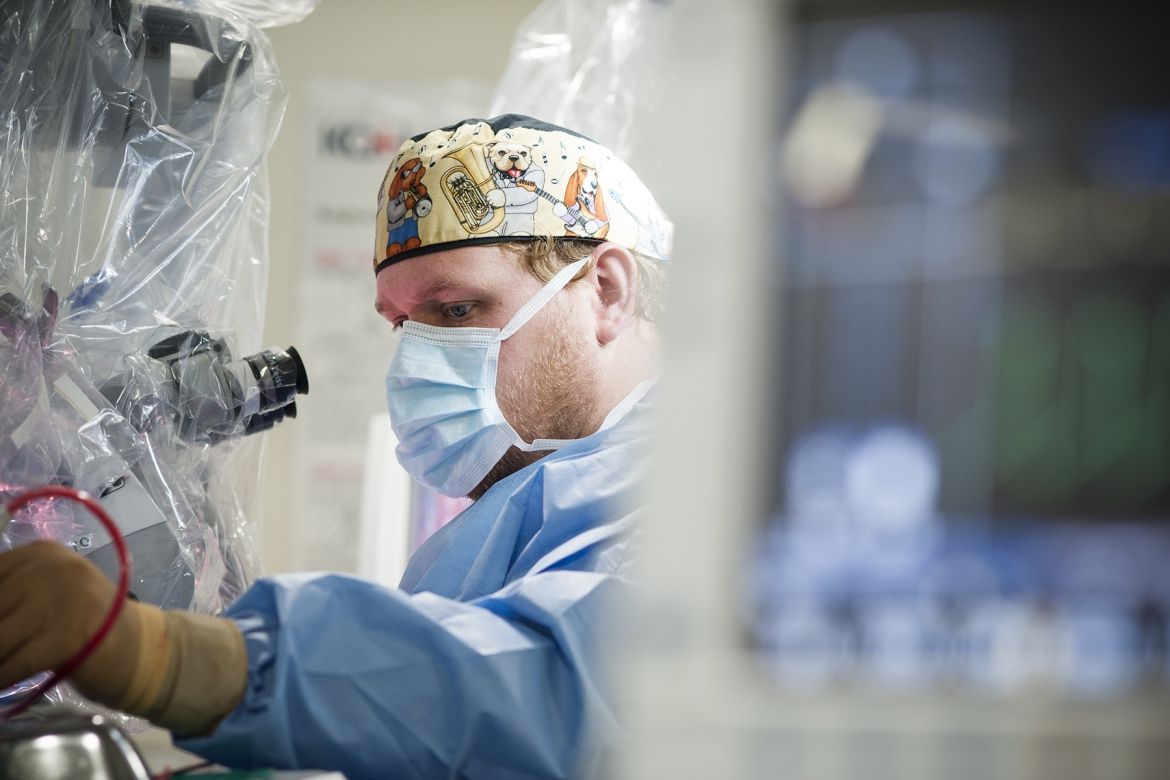
Dr. DJ Cook in an operating room at Kingston Health Sciences Centre

